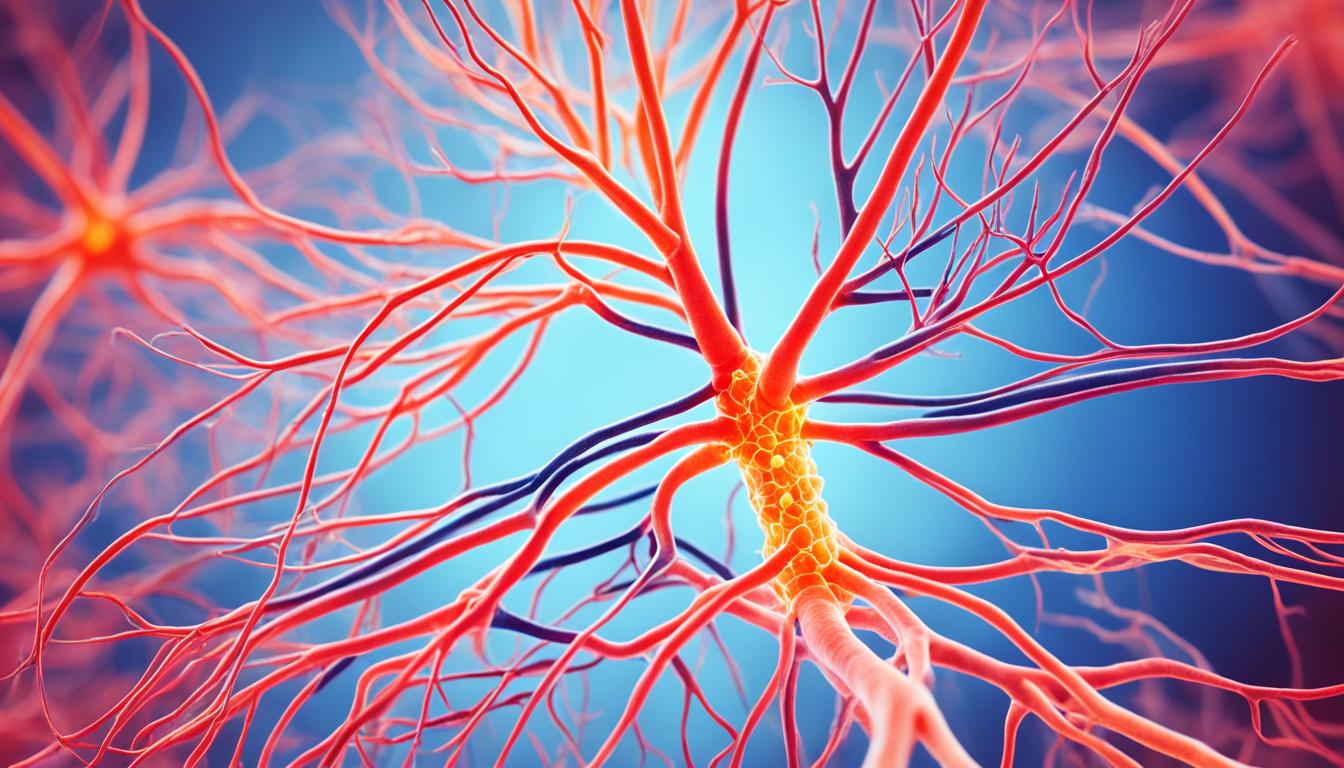Neuropathy peripheral is when nerves are damaged. This affects how your brain and spinal cord send messages. You might feel loss of sensation, pain, and tingling. You might also have muscle weakness and problems with coordination. The main cause is diabetes. But, it can also happen because of autoimmune diseases, infections, and exposure to toxins.
Doctors will do a full check-up and tests to diagnose you. Unfortunately, there’s no cure yet. But, treatments can help with the symptoms. Stem cell therapy is a new and promising approach. It aims to repair damaged nerves. This treatment has shown good results in managing peripheral neuropathy.
Stem cell therapy uses cells from human umbilical cords. These cells help nerve growth, improve blood flow, and regulate the immune system. Costa Rica’s Stem Cells Transplant Institute provides this therapy for peripheral neuropathy. They also offer other therapies like antioxidants, ozone, and platelet-rich plasma.
Key Takeaways:
- Peripheral neuropathy is a condition that involves damage to the nerves in the extremities.
- Common symptoms of peripheral neuropathy include loss of sensation, pain, tingling, muscle weakness, and coordination issues.
- The leading cause of peripheral neuropathy is diabetes mellitus, but it can also be caused by other factors such as autoimmune diseases, infections, and toxic exposures.
- Diagnosis of peripheral neuropathy involves a thorough physical exam, blood tests, and nerve function tests.
- Stem cell therapy has shown promise in improving the symptoms of peripheral neuropathy by regenerating damaged nerves.
Causes and Symptoms of Peripheral Neuropathy
Peripheral neuropathy can start from many different causes. The main one is diabetes. This illness harms the nerves that carry messages to and from your brain and spinal cord. Other causes include autoimmune diseases and infections. It can also happen because of exposure to toxins.
Symptoms can differ, based on which nerves are damaged. If the motor nerves are affected, you might feel weak and have trouble walking or moving. Damage to sensory nerves can lead to feeling less touch or tingling. Autonomic nerve damage might show up as heat intolerance or trouble with sex and digestion.
Diabetic neuropathy hurts individuals with diabetes by causing nerve damage. This can lead to serious problems like foot ulcers, or even the need for amputation. It’s crucial for people with diabetes to know the signs of this condition and get help early.
Understanding the causes and symptoms of peripheral neuropathy is key. Quick diagnosis and treatment can really improve life for those with this condition.
Causes of Peripheral Neuropathy
| Cause | Description |
|---|---|
| Diabetes Mellitus | The most common cause of peripheral neuropathy, affecting the nerves in individuals with diabetes. |
| Autoimmune Diseases | Conditions like rheumatoid arthritis and lupus can lead to damage of the peripheral nerves. |
| Infections | Infections such as Lyme disease can cause peripheral neuropathy. |
| Toxic Exposures | Exposure to toxins like alcoholism or chemotherapy can result in peripheral neuropathy. |
Peripheral Neuropathy Symptoms
- Muscle weakness and coordination issues.
- Loss of sensation and tingling.
- Heat intolerance, sexual dysfunction, and gastrointestinal issues.
Knowing the symptoms and causes helps with getting the right care. It means looking into treatments that could help with peripheral neuropathy.
Next, we’ll talk about how stem cell therapy might bring relief and even reverse some of the effects of peripheral neuropathy.
Stem Cell Therapy for Peripheral Neuropathy
Stem cell therapy is becoming an important option for people with peripheral neuropathy. It uses stem cells from human umbilical cord tissue. This treatment helps by solving the main issue causing neuropathy.
Mesenchymal stem cells can make proteins that help nerves grow and survive. They also produce factors that heal blood vessels and substances that can stop nerve damage. Studies show that this therapy works well for people with diabetic neuropathy. They reported less pain, better feeling, and a happier life.
At the Stem Cells Transplant Institute in Costa Rica, we use stem cell therapy for peripheral neuropathy. Our team uses human umbilical cord mesenchymal stem cells, along with other treatments like antioxidant therapy. This approach aims to repair damaged nerves. It can bring relief and improve how well your nerves work, helping people with peripheral neuropathy.
If you’re dealing with peripheral neuropathy and looking for other treatment choices, consider stem cell therapy. Contact us to find out more about how our therapies can help you. We are happy to help you start your journey to finding relief from neuropathy.

